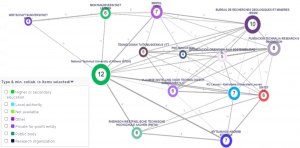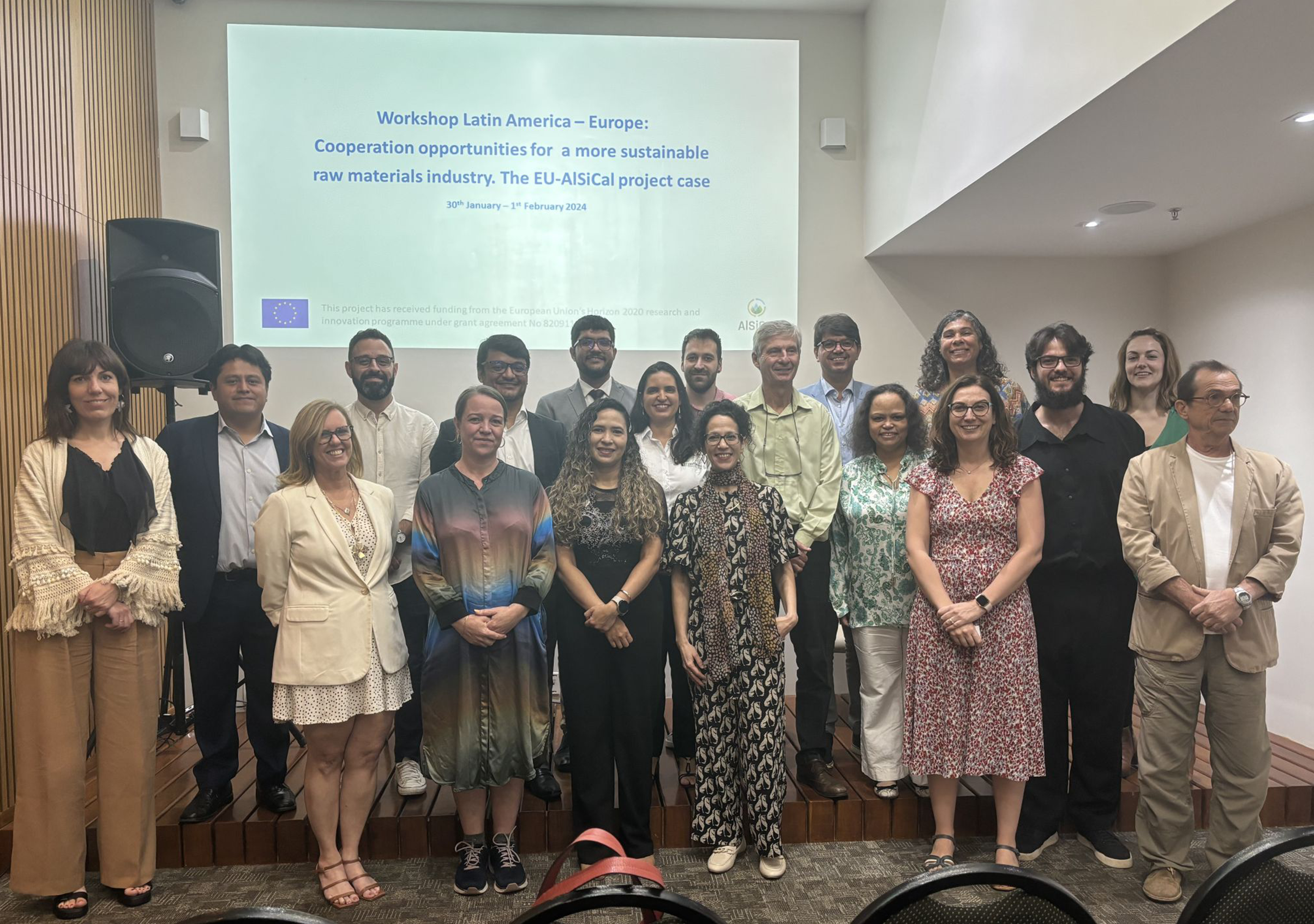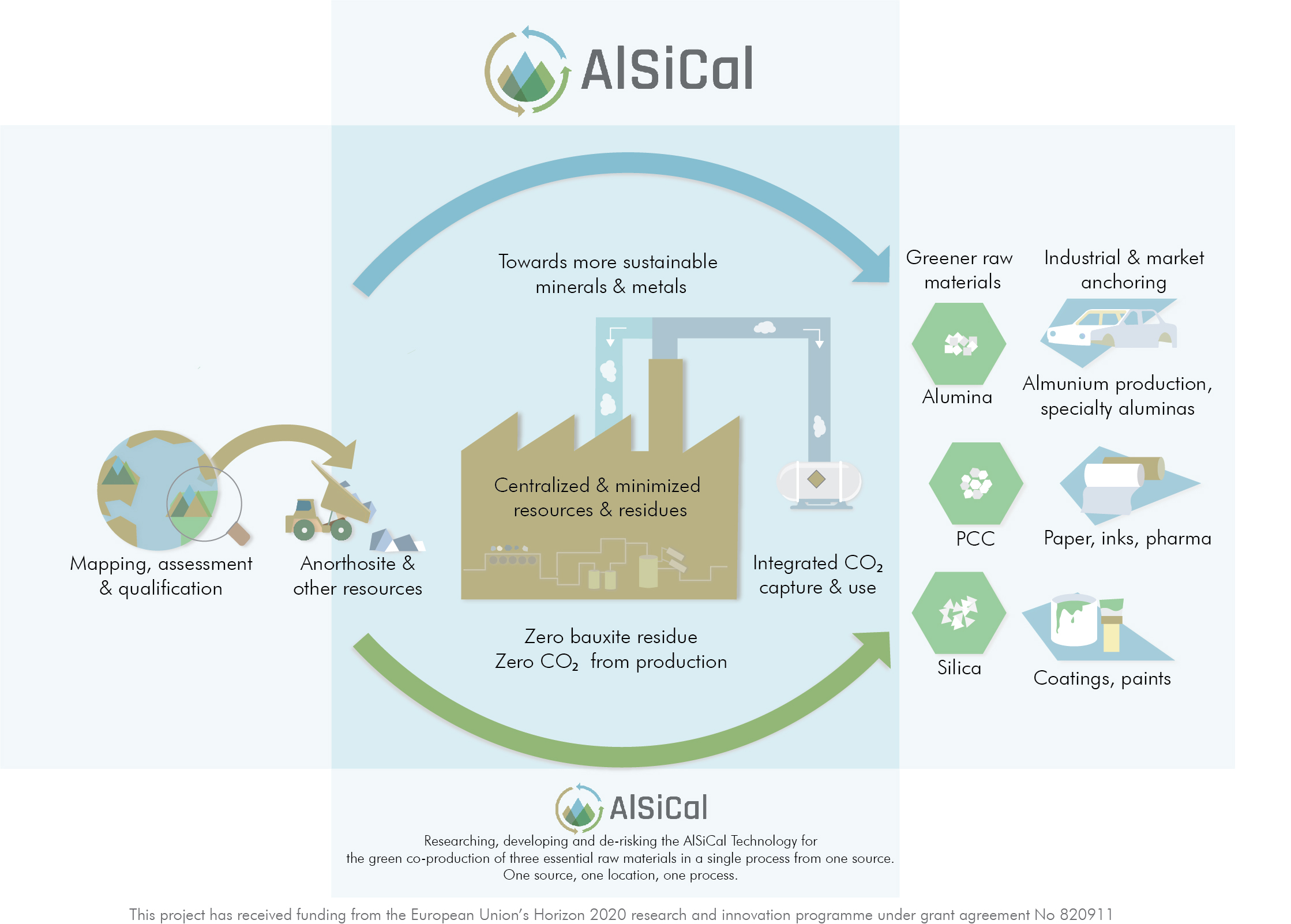
05 May 2022 / News
Stakeholder analysis of AlSiCal’s most important stakeholders
As a leading consultancy firm specialized in identifying innovative players, PNO performed the stakeholder analysis within the AlSiCal project. In this article, insights are given on how this was carried out, the gained results, and the added value it could offer to the whole consortium.
Intro
The AlSiCal project’s main objective is to further research, develop and de-risk a ground-breaking concept for processing aluminium-rich sources. This concept will allow Europe to valorize abundant resources of rocks and minerals, for the production of alumina-aluminium, alternative to bauxite which is a critical raw material. As an example, by integrating CO2 capture, this technology processes anorthosite, a rock widely available in Nordic countries and other places in the world, enabling co-production of three essential for the European Industry raw materials, i.e alumina (Al2O3), silica (SiO2) and precipitated calcium carbonate (PCC-CaCO3) without generating metallurgical wastes (e.g. Bauxite Residue from bauxite processing) and with zero carbon emissions, a truly zero waste – zero emissions sustainable production. To ensure the project advancements and results are taken up for further development even after the end of the project, a set of communication and dissemination activities are essential. These would indeed allow to communicate the achieved results to the most suitable audience which could be further engaged to enhance the uptake of the AlSiCal technology and related insights. Given the multitude of potential applications the AlSiCal project’s multiple products have, e.g. aluminium and silicon metals production, elastomers, paints & coatings, glass, paper etc., communication and dissemination activities are therefore essential to allow the development of a viable business model which could provide, during and after the end of the project, an interesting incentive for stakeholders to invest in this technology and further commercialize it.
To facilitate future uptake, a proper analysis of the different parties is key to identify different entities, companies and stakeholders that could either offer a competitive technology or are willing to invest in the technology you are developing. This analysis is called a stakeholder analysis. The keyword here is stakeholder, which is for the case of AlSiCal defined as an entity that has an interest in the technology and can either affect or be affected by it. As a leading consultancy firm specialized in identifying innovative players, PNO performed the stakeholder analysis within the AlSiCal project. In this article insights are given on how this was carried out, the gained results and the added value it could offer to the whole consortium.
Stakeholder Analysis – a short introduction
Although often overlooked, developing the exploitation potential for technologies in European projects is essential for future uptake in the market, which eventually is the ultimate goal of the European Commission for supporting promising technologies. By performing a stakeholder analysis (SA), we identified the most important stakeholders for the AlSiCal project, including their position in the Al, Si and/or PCC value chain. The SA gave us the opportunity to visualize the network of the main influential stakeholders in the field and their connections with each other, while also providing details on the stakeholders per se, which can be used at a later stage to engage with them if required. This clearly shows the value of such an analysis: by identifying big players which could be interested either as competitor or as customer, we can create a basis for further discussion to the question ‘’How should we bring the AlSiCal technology to the market after the project?’’.
How did we do it?
“Stakeholders” and “identifying markets” might be rather vague terms. If not duly specified, they do not provide a solid basis for a stakeholder analysis, and can be even misleading. The key starting point is hence a clear definition of the boundaries of the analysis. PNO created a clear methodology for this, ensuring trustworthiness and transparency of the results. Our search consisted of a complementary analysis based on three pillars, deemed to be the most important types of stakeholders for the AlSiCal project:
- Innovators, i.e. organizations involved in the innovation process of similar EU funded projects.
- Patent owners, e. organizations or entities that are involved in innovation processes relevant for or similar to AlSiCal and are expected to have an interest in the project’s outcome due to their involvement in projects with similar developments
- Business drivers, e. important players, generally backed by a robust and longstanding business model that are on the need of the solutions and technologies developed in a project. The results of these three pillars were eventually combined and provided an overall insight on the most relevant stakeholders for the AlSiCal project.

Figure 1. The three pillars of the stakeholder analysis
The Innovators, Patent Owners and Business Driver search
The first step of the search was to investigate the Innovators. These entities could be considered as interesting stakeholders, as they could be interested in one of the aspects of the AlSiCal technology which could form the basis for future collaboration or clustering. By investigating different EU funded projects we created an overview of entities involved in other EU funded projects and mapped their relation towards each other in a network analysis (shown in the figure below). This showed us the most relevant projects as well as the most involved and connected stakeholders, which were or will possibly be contacted for clustering or other sort of engagement.
Figure 2. Example of a network analysis of the Innovators
The last step of the stakeholder analysis is to identify the Business drivers. While previous analyses were both focusing on a quantitative analysis, the lack of a general database for business drivers made this analysis more open structured and of a qualitative nature. In contrast with the Innovator and Patent owner search, the Business driver desk research did not lead to an overview of the most important stakeholders, as no qualification could be made other than the identification of companies. However, we did identify more than 150 different companies and entities active in the field of Al, Si and PCC with a clear commercial willingness to solve their problem with the results arising from the AlSiCal project.In the second phase of the analysis, the Patent owners were identified. The baseline for the analysis was that patents should have a similarity with the AlSiCal concept. Since filing and protecting a patent will require additional costs, finding patents filed from a specific company implies a level of commitment to protect their R&D results. Based on this eagerness to protect results that could be similar or have a relevant connection, it is expected that the identified entities could also be interested in the AlSiCal project and can therefore be seen as a key stakeholder. Based on these findings we scored the different entities behind the patents and listed the most relevant ones.
Conclusion
For the realization of promising innovative technologies, it is important to have a clear understanding of interested parties to develop an exploitation strategy capable of bringing the technology to the market. The performed stakeholder analysis identified numerous interesting stakeholders, patents and projects, that give insights on the expected competition but also on potential customers. Within AlSiCal the results of the analysis will be used as basis for the development of a more in depth exploitation strategy to bring the AlSiCal technology to the market and work towards a greener mineral and metal industry in Europe.
Are you interested in our findings, and would you like to see if you are also an interesting stakeholder for the AlSiCal project? Please don’t hesitate to contact us to find out.



 This project has received funding from the European Union’s Horizon 2020 research and innovation programme under grant agreement No 820911
This project has received funding from the European Union’s Horizon 2020 research and innovation programme under grant agreement No 820911